The Beomosa Temple is one of the oldest and most renowned temples in Korea, and in Buddhism. It is located on the slopes of the Geumjeongsan Mountain and was built around 678AD. The original temple was burnt down during the Japanese Invasion of Korea in 1592, but others have been built on the same spot to replace it, with renovation efforts done on some of the items that survived the inferno. One of its most famous treasures is a larger-than-life statue of Buddha, located in one of the halls, where tourists and visitors come to pray or meditate.
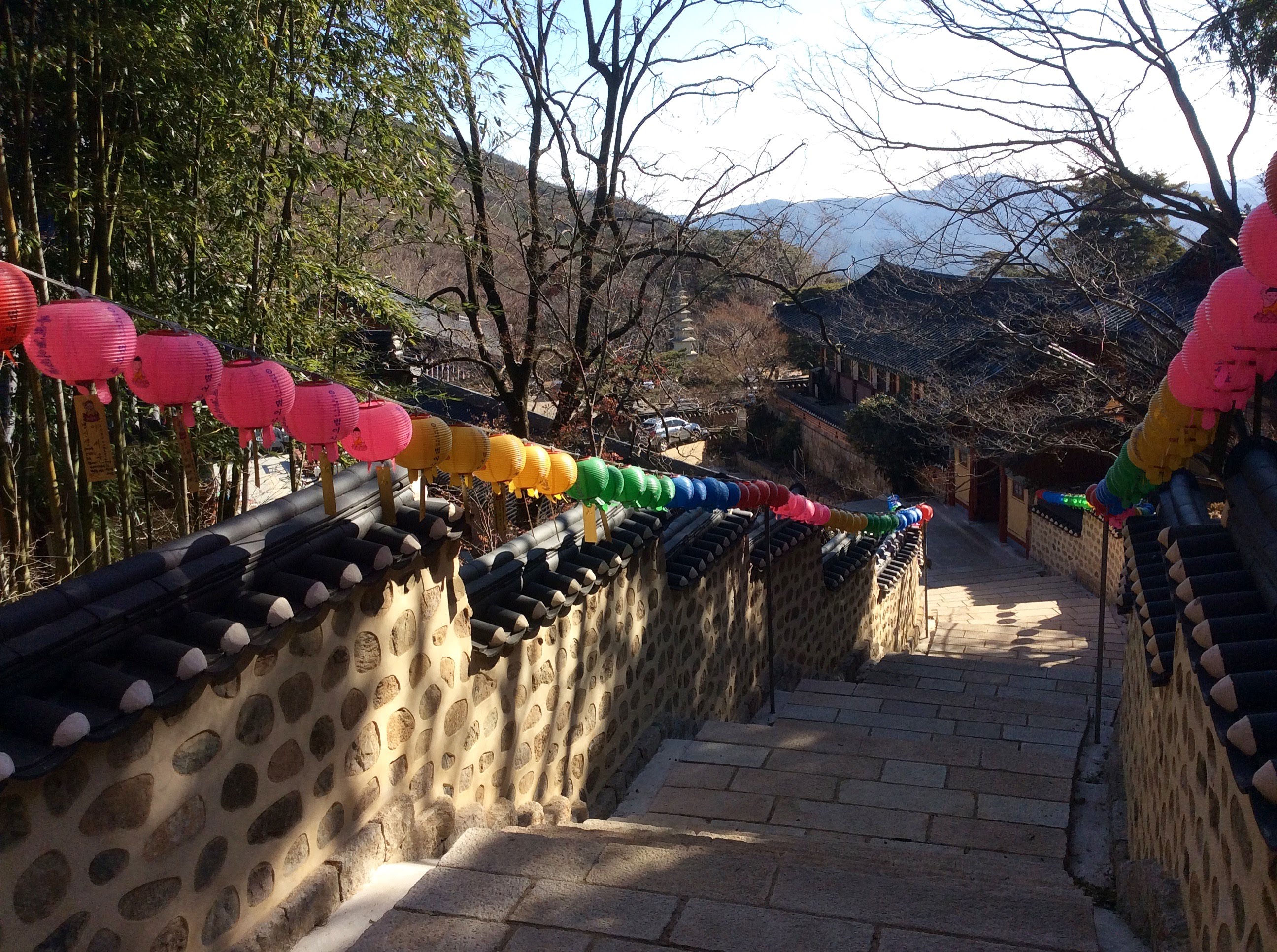
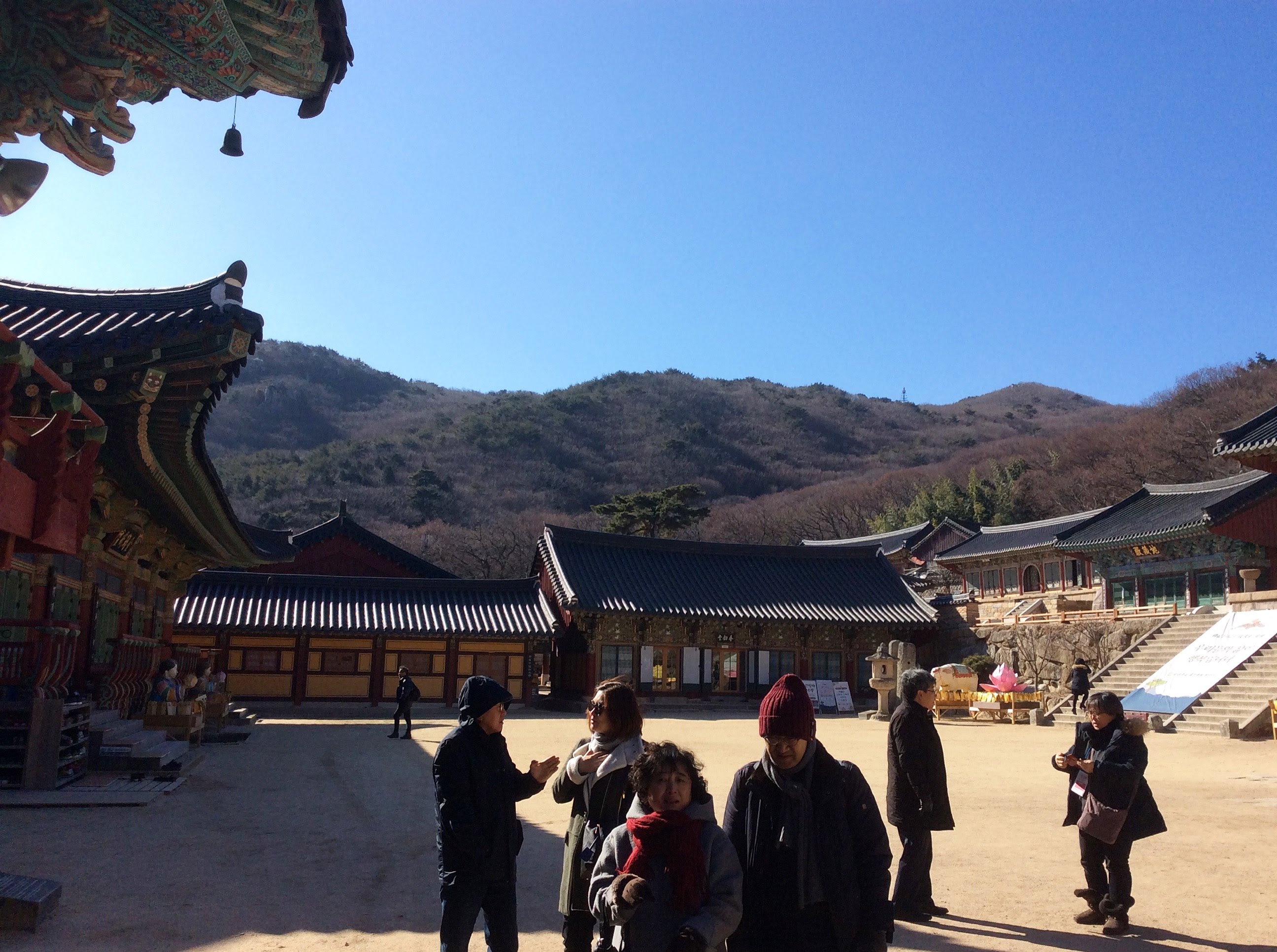
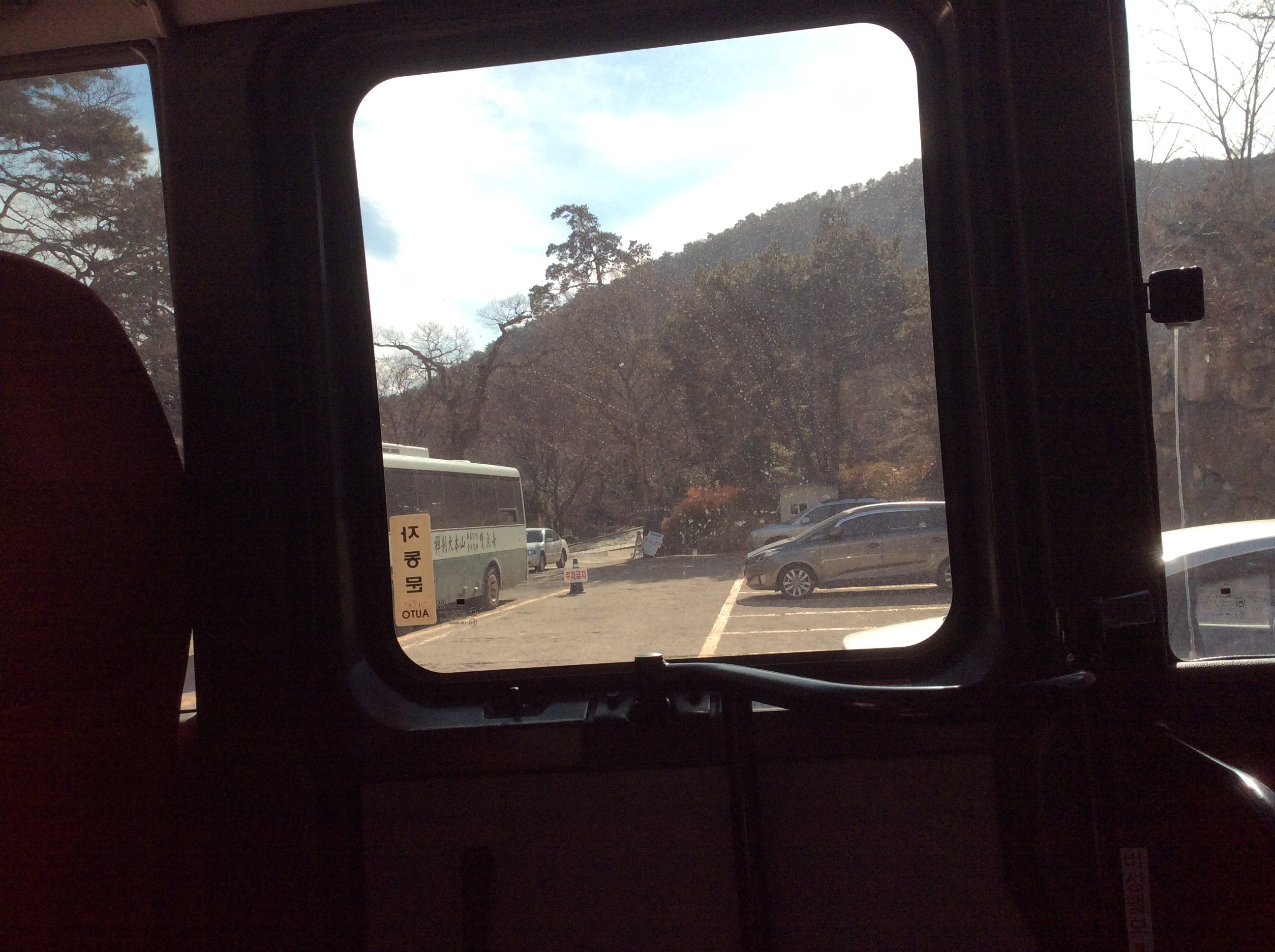
I was at Beomosa, pronounced like [po-mo-saa], recently, visiting with writer and scholar colleagues from different countries who were in Busan for a literature festival/workshop titled New World Literature Beyond Eurocentrism. It was a chance to discuss issues of relevance in the global conversations around the direction of literature. I was on a panel with writers from the Philipines, China, Mexico, and Korea my contribution focused on my work as a writer and linguist in Nigeria and the challenges of African language literature. (The title of this my recent interview with AfricanWriter.com makes the case perhaps more concisely).
The name of the temple – Beomosa – means “Nirvana fish” in Korean, named after a fish reputed to have been found in a river on top of the mountain – a river said to have housed Buddha himself at some point in prehistory. It was my first time in any Buddhist temple, and a rare privilege to have my first visit be at one of Buddhism’s holy places. I learnt a lot about what Buddhism is and what it’s not. It was also interesting to learn that its purpose “to end all suffering” had long been wrongly translated. Our guide said that the better translation would be “to end all unsatisfactoriness”, which made more sense. Most religions of the world profess a kind of longing for the afterlife. Or, at the last, some sort of paradise. In Buddhism, that is an enlightenment that can only come from within. Not by prayers to anyone, not even to Buddha, but a pursuit of an internal state of transcending human disquiet.
Our guide was a young monk, about 27-ish. He was born in Korea but spent much of his childhood and adult life in the Central Illinois area around Champaign, attending the University of Illinois, Urbana. His accent gave him away pretty quickly, though, according to him, this was the first time he would be using the English language since he returned to Korea just three years ago to become a Buddhist monk. The language of the temple (and of the environment) is Korean and Chinese. He provided us an overview of the temple, its ancient and contemporary history, and his role as an apprentice monk. A question I wanted to ask, but didn’t, was how he came to the decision to leave the modern life behind in America to become a monk in this remote part of the world. What I managed to ask was whether there are people who begin this journey to become a monk and then give up half-way. The answer is “yes”, but his passion and conviction left me in no doubt that he wouldn’t be one of them.
The temperature in Busan on the day of the visit felt like Antartica, but it was around -12 degrees. Not much of a difference to the Nigerian who has been familiar with only two seasons: wet or dry, each hovering around 30 degrees Celsius. Korean travel writer and translator Kim Soo Woo had looked at me with motherly concern earlier in the morning as I came out of my hotel wearing about four shirts over the other. “This won’t be enough,” she suggested. “It would be reaaaaaly cold.” Do I have something else to wear on these four shirts before putting on a jacket? I went back into my room and found a sweater I had thankfully brought along from Lagos, so I slid into it. And yet, on this mountain, beaten left and right by the chilly wind that still managed to pierce deep into my bones through the clothes, I wished that I had more clothes to hide under.
The monks had a special outfit which, I suspect, also had inside insulation. They seemed comfortable in their skin and in this environment. The temple would certainly be a more interesting place to visit in the fall or at any other time of the year, but they didn’t seem discomforted in any way. When it was lunch time, we gathered into the dining hall, and into an inside room open only to the elderly monks and their visitors. It was another rare privilege. On the wall of the dining room is the “meal chant”, in Korean, Chinese, and in English, which says:
Where has this food come from?
I am ashamed of eating it.
I will take it as medicine
to get rid of greed in my mind
and to keep my physical being
in order to achieve enlightenment.
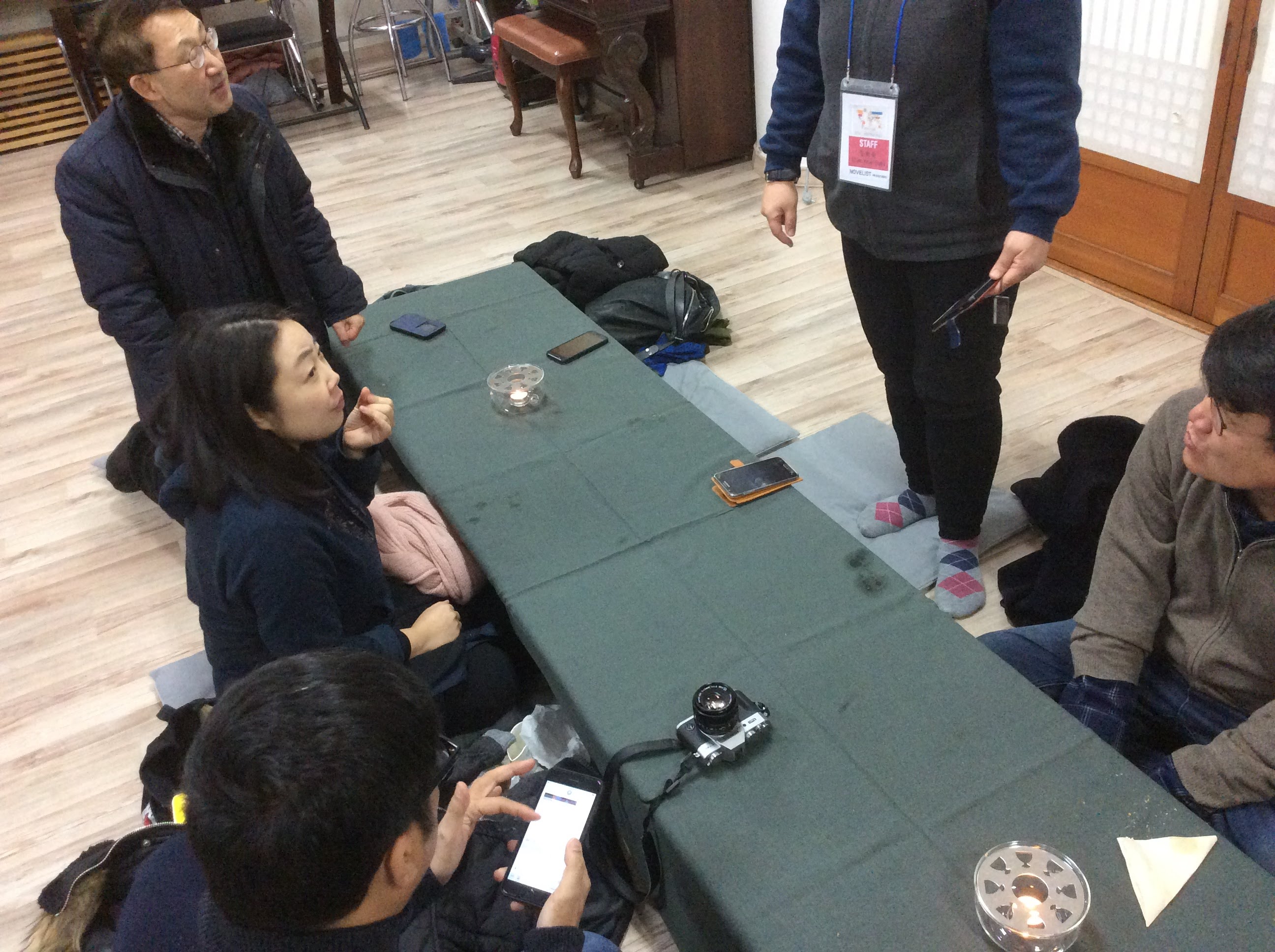
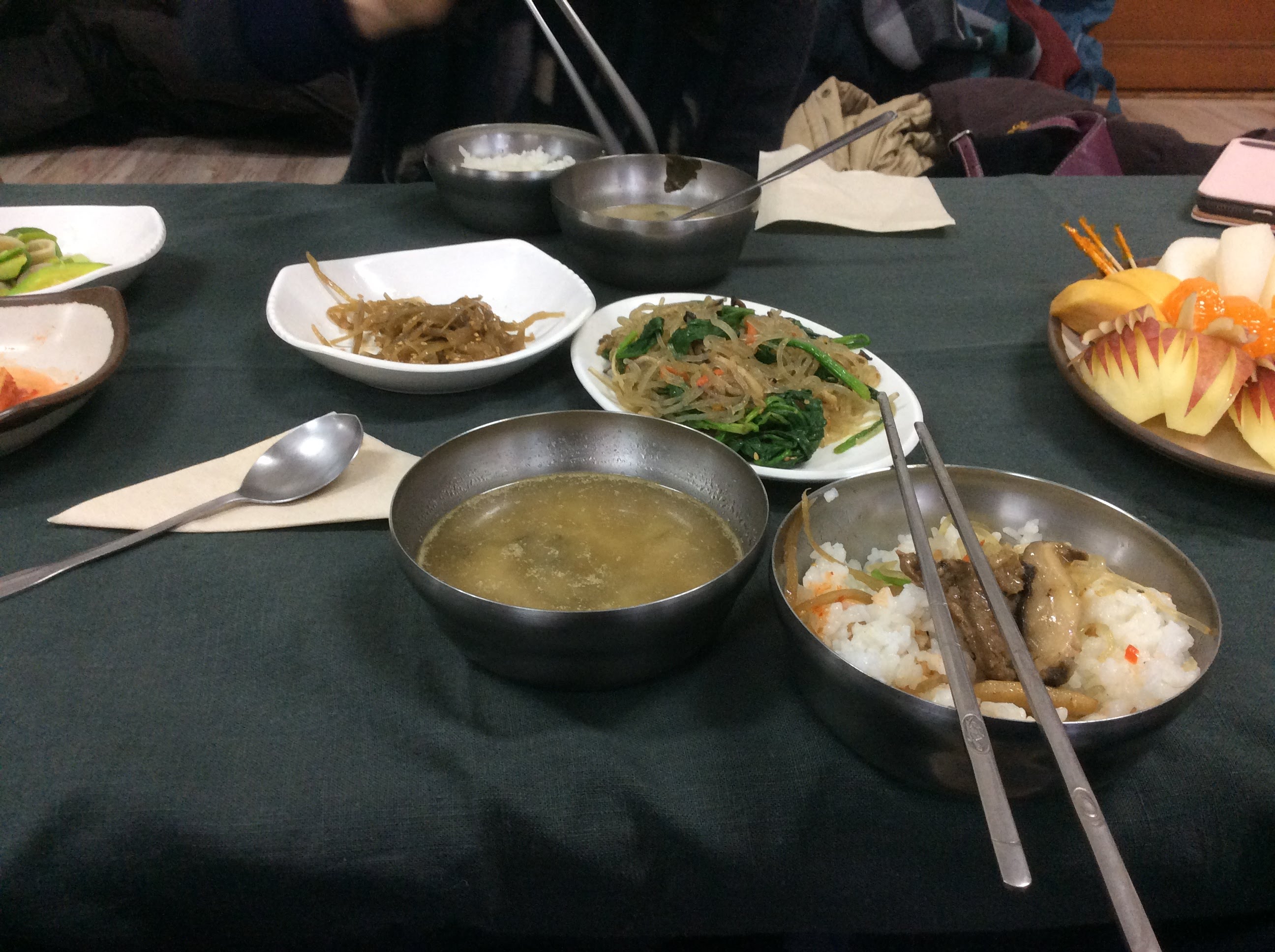
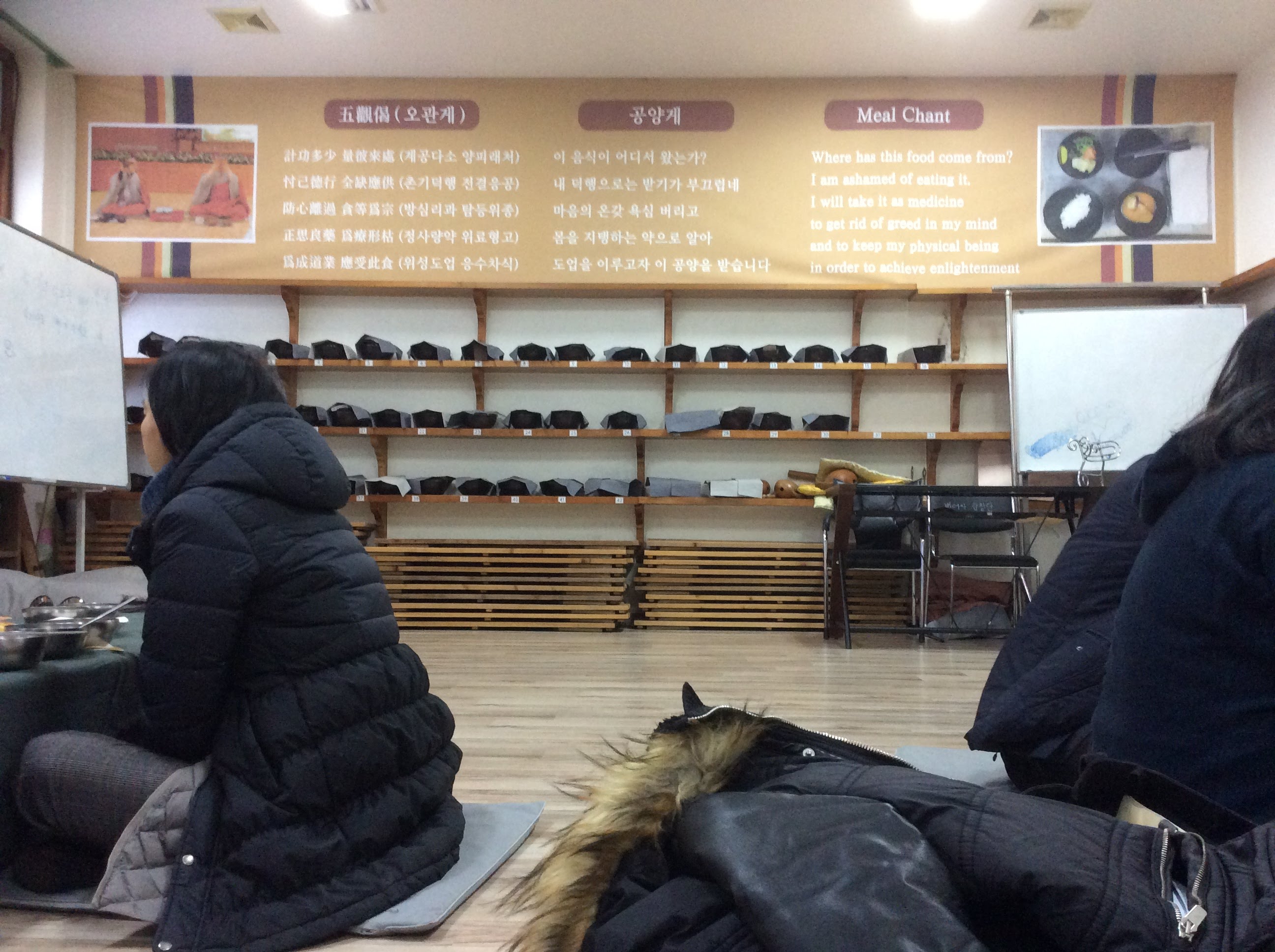
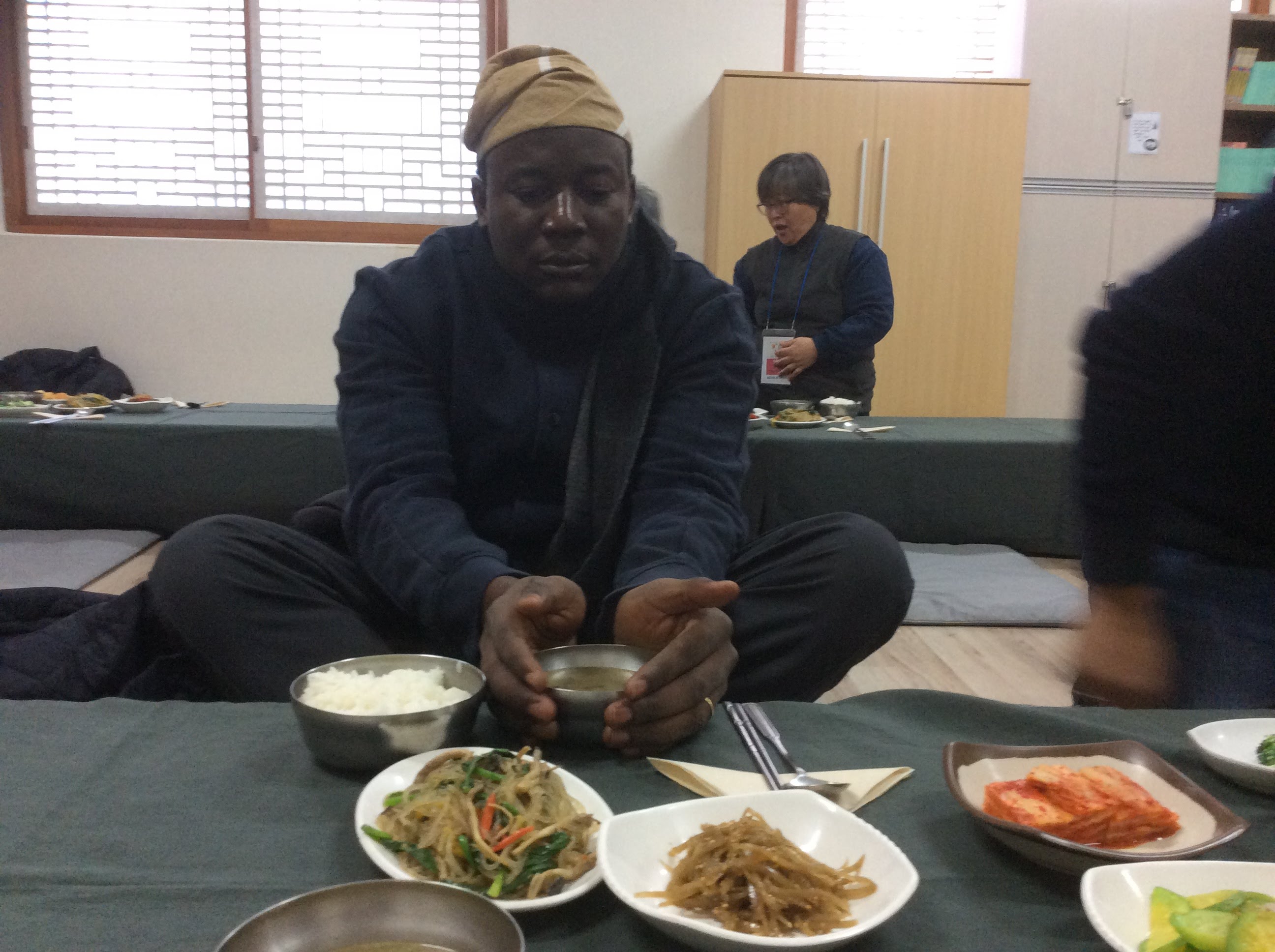
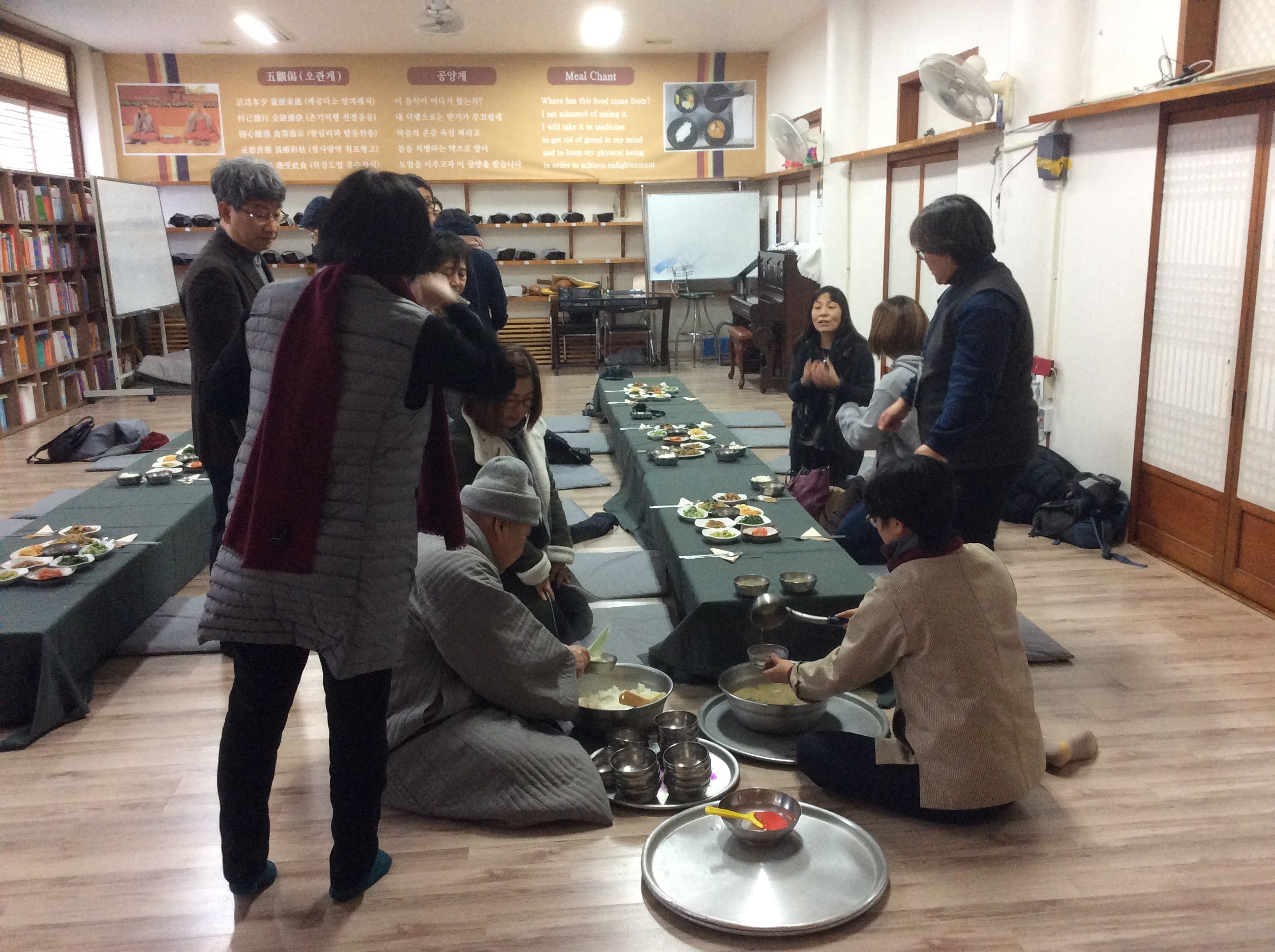
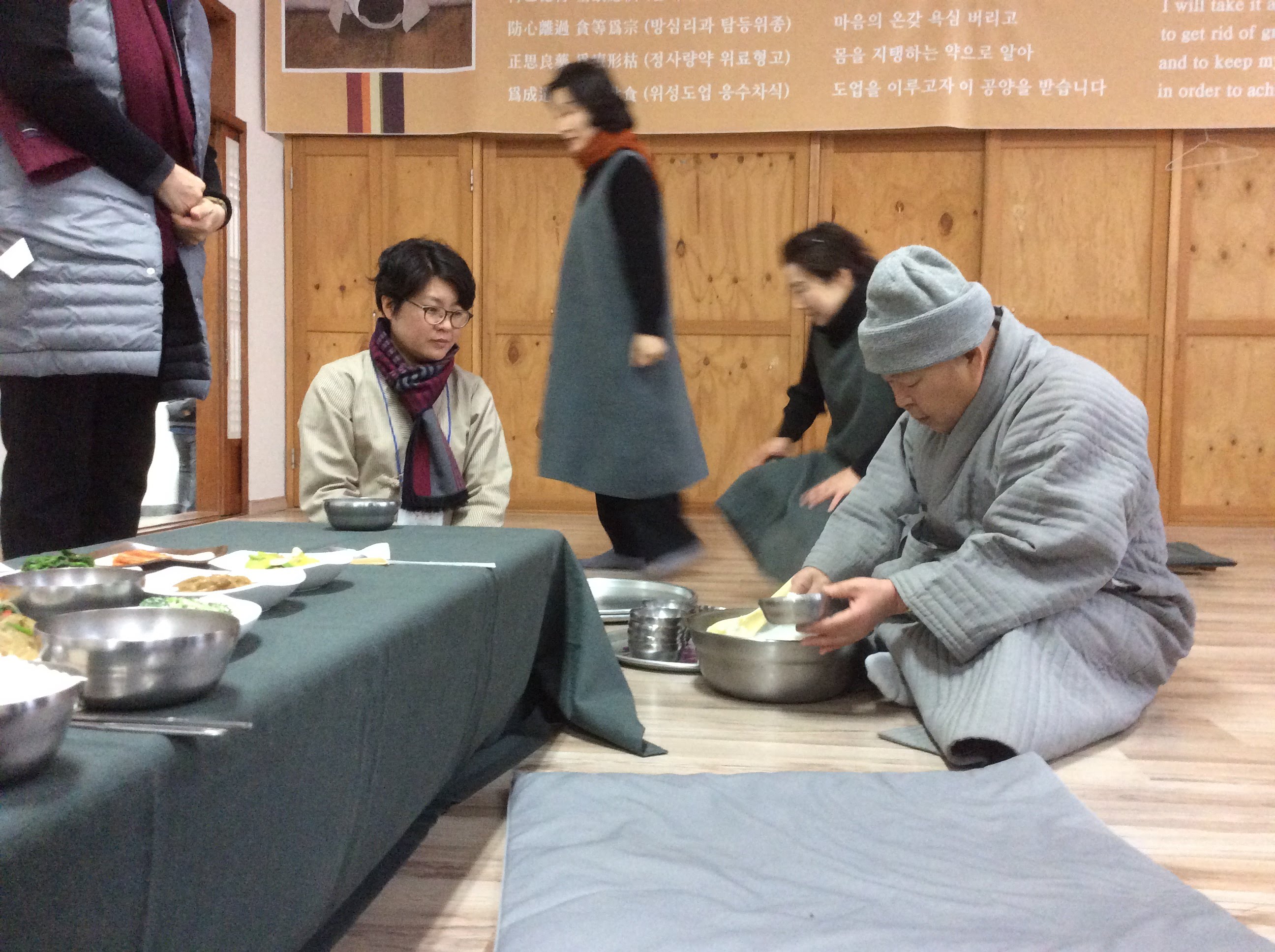
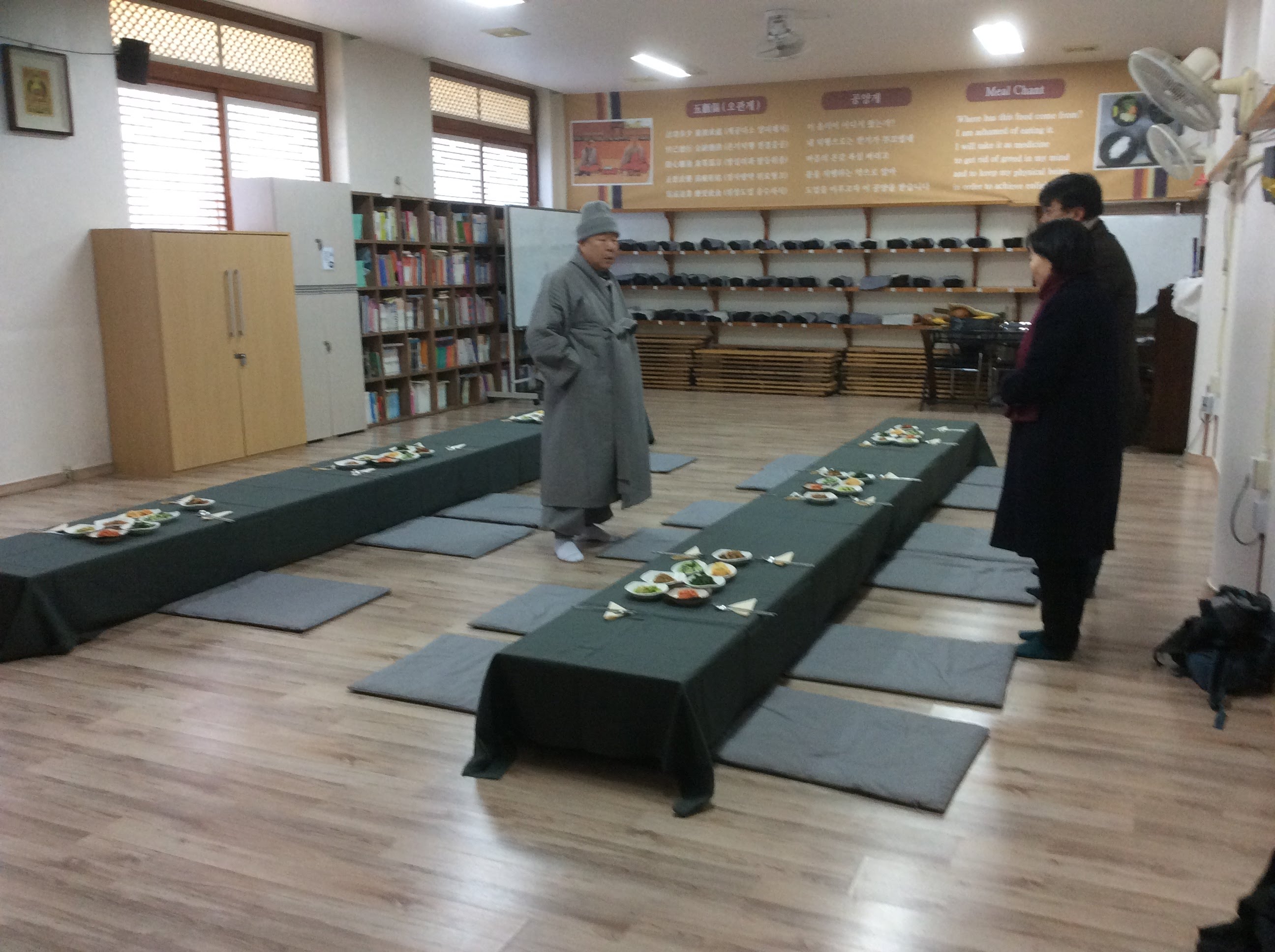
It was delicious food, but I don’t know if the spirit of Buddha would have appreciated this concession of mine to the purpose of food as more than just a means to enlightenment.
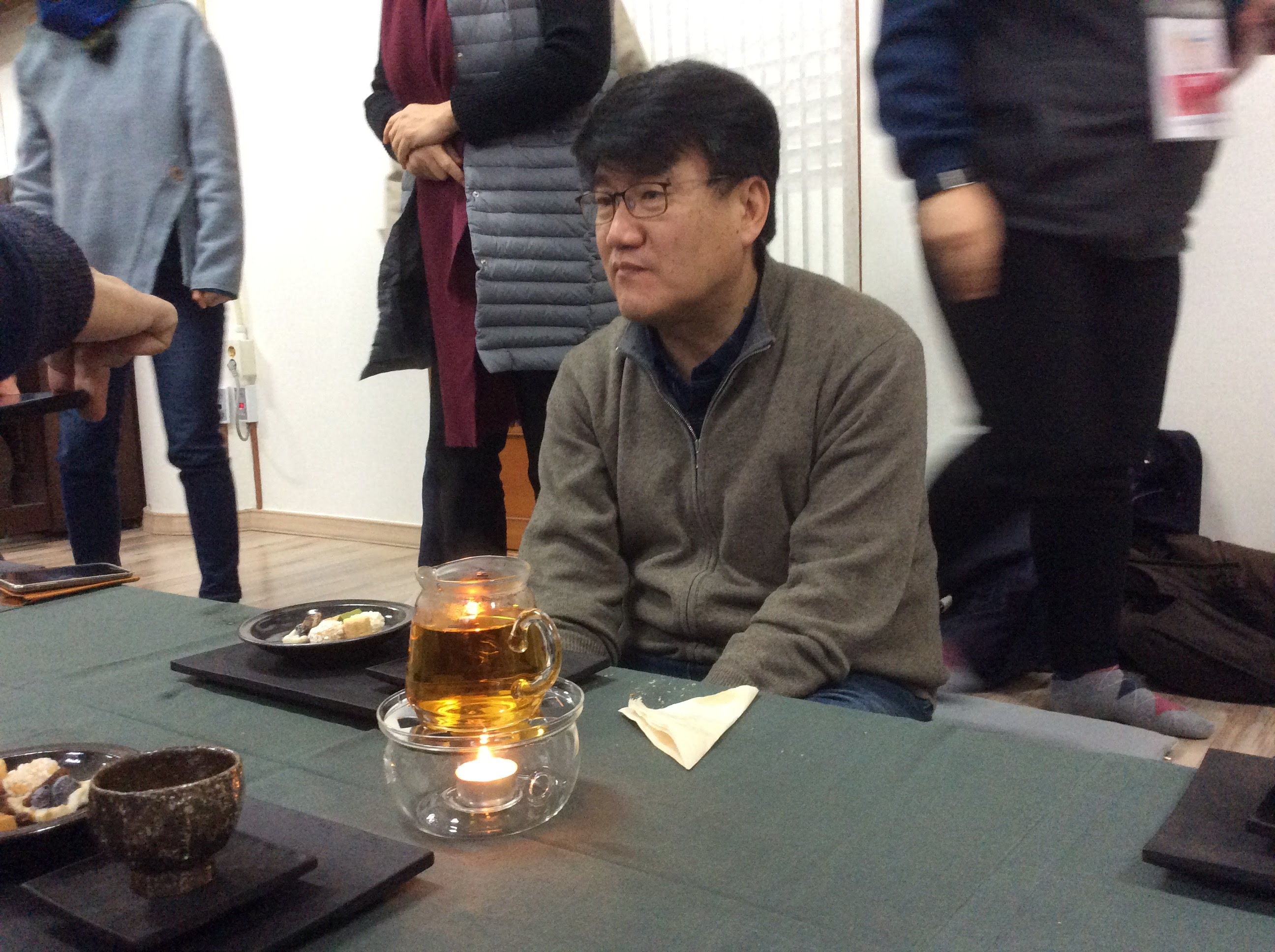
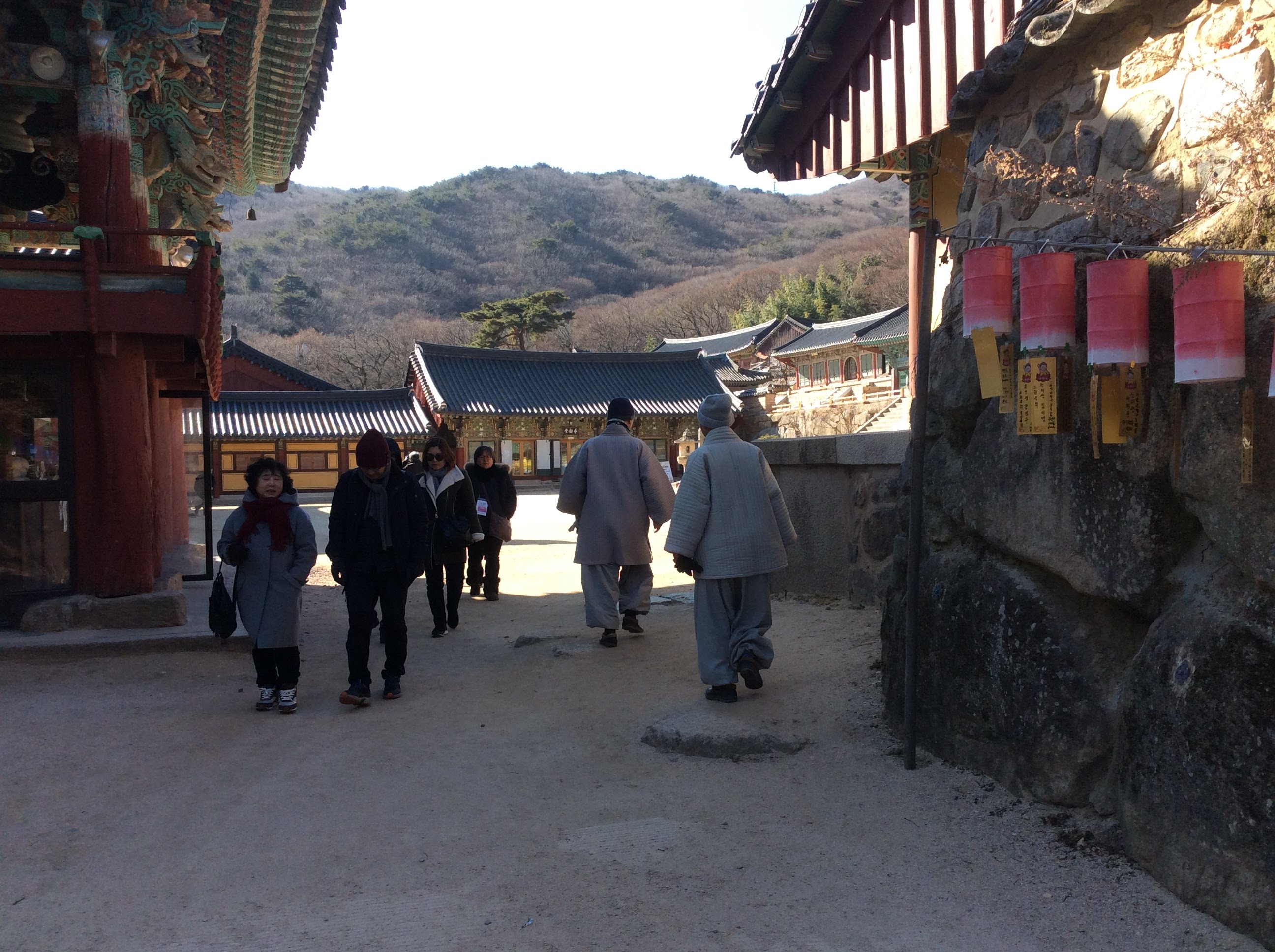
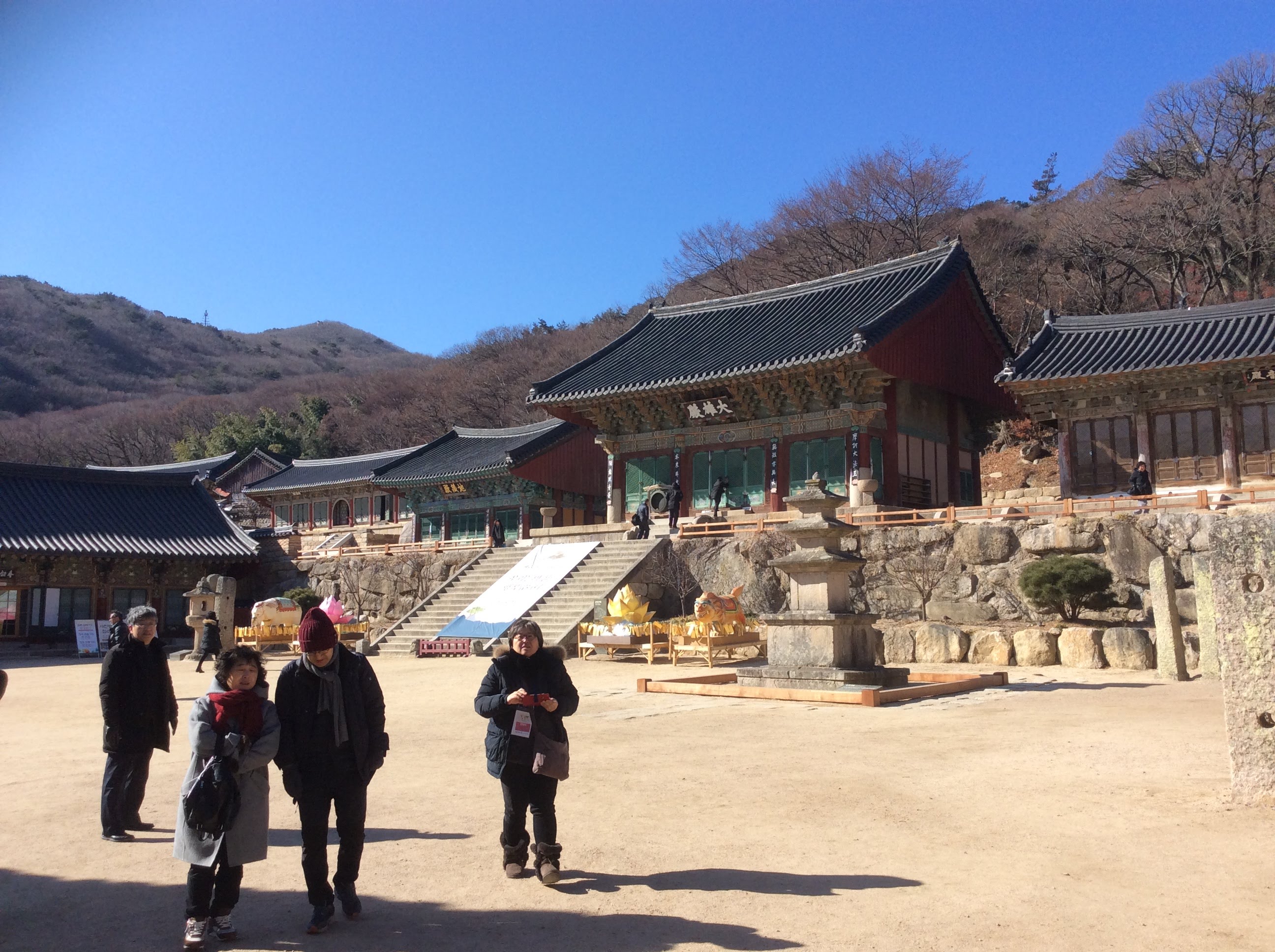
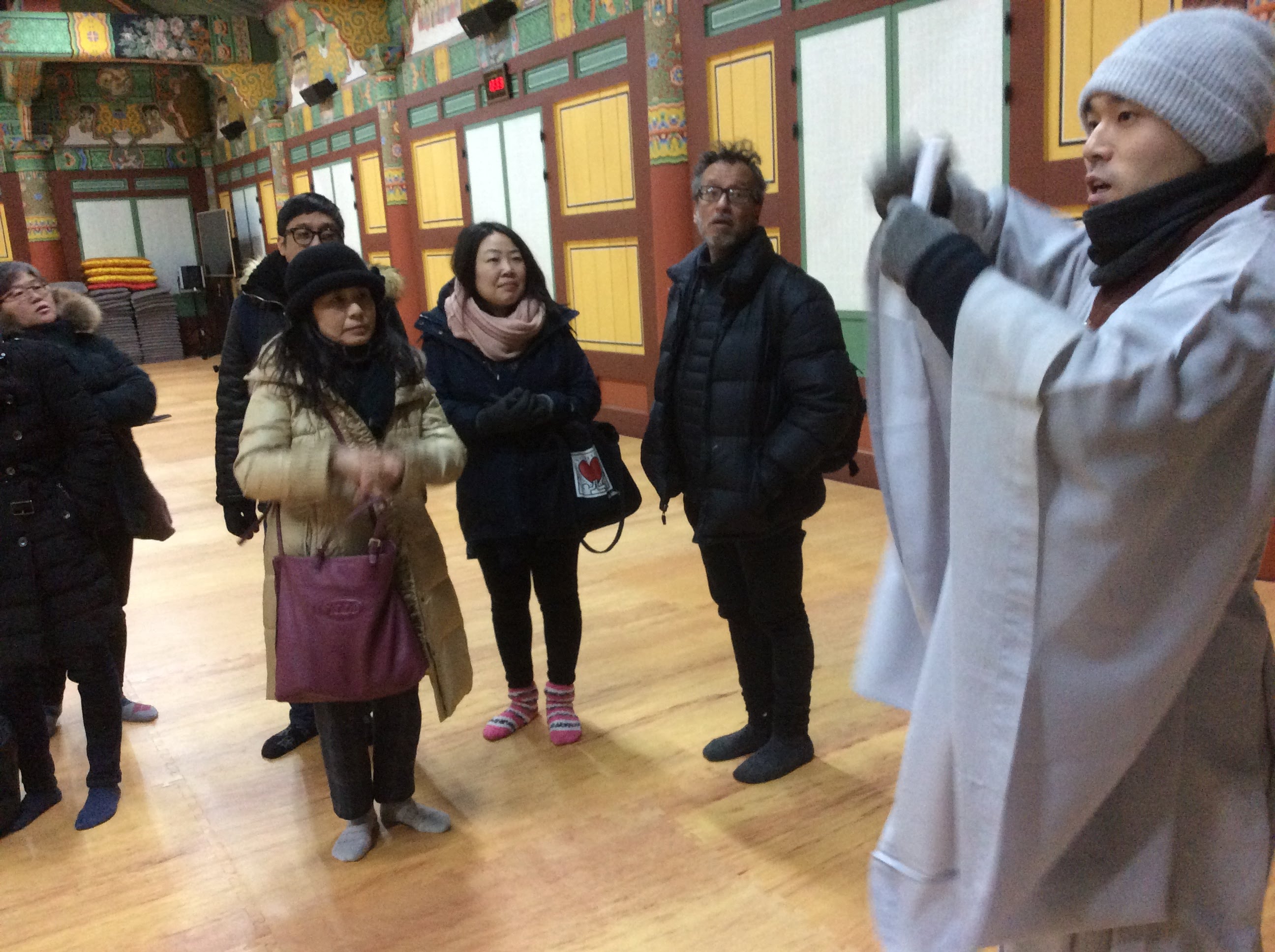

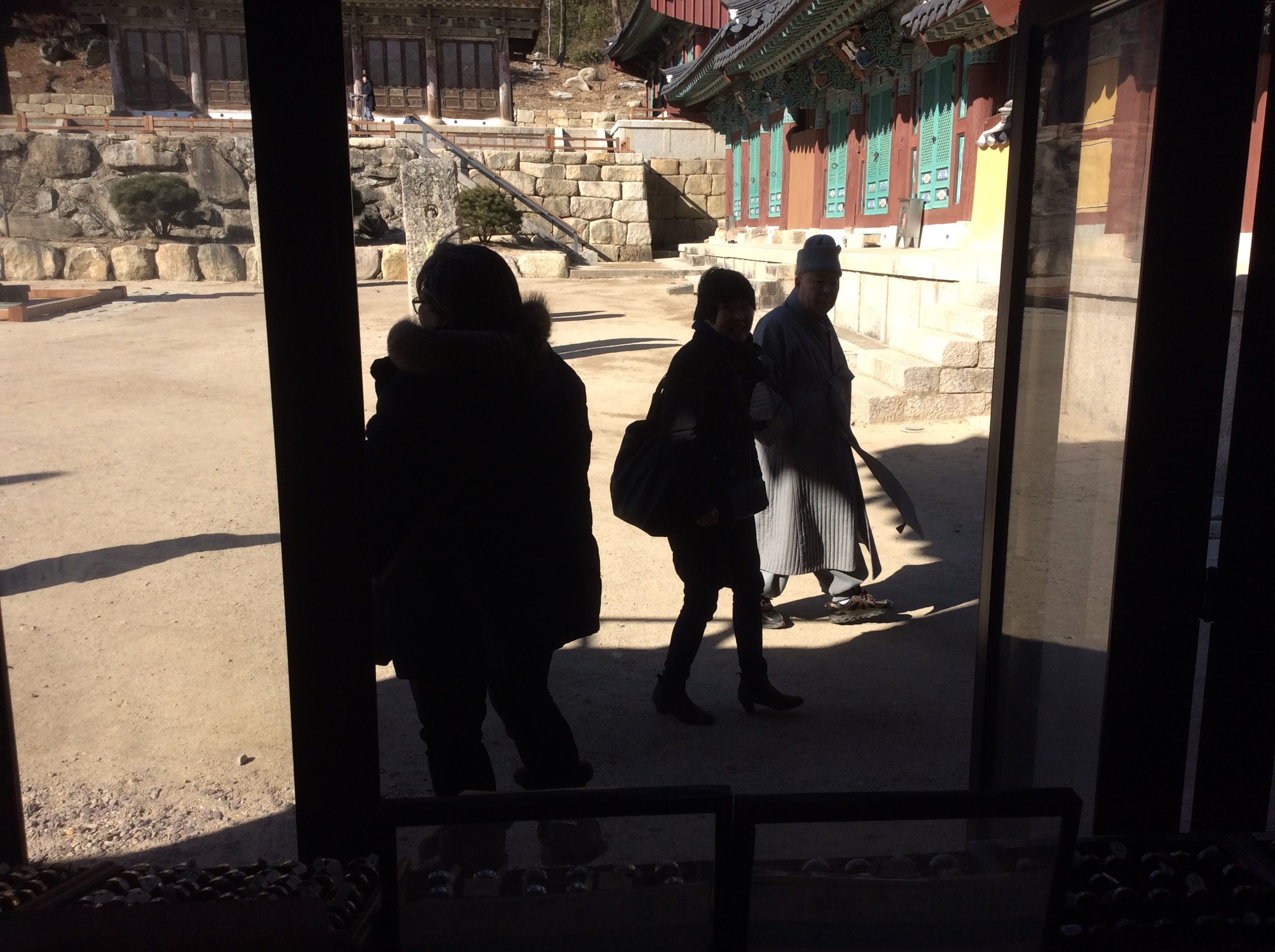

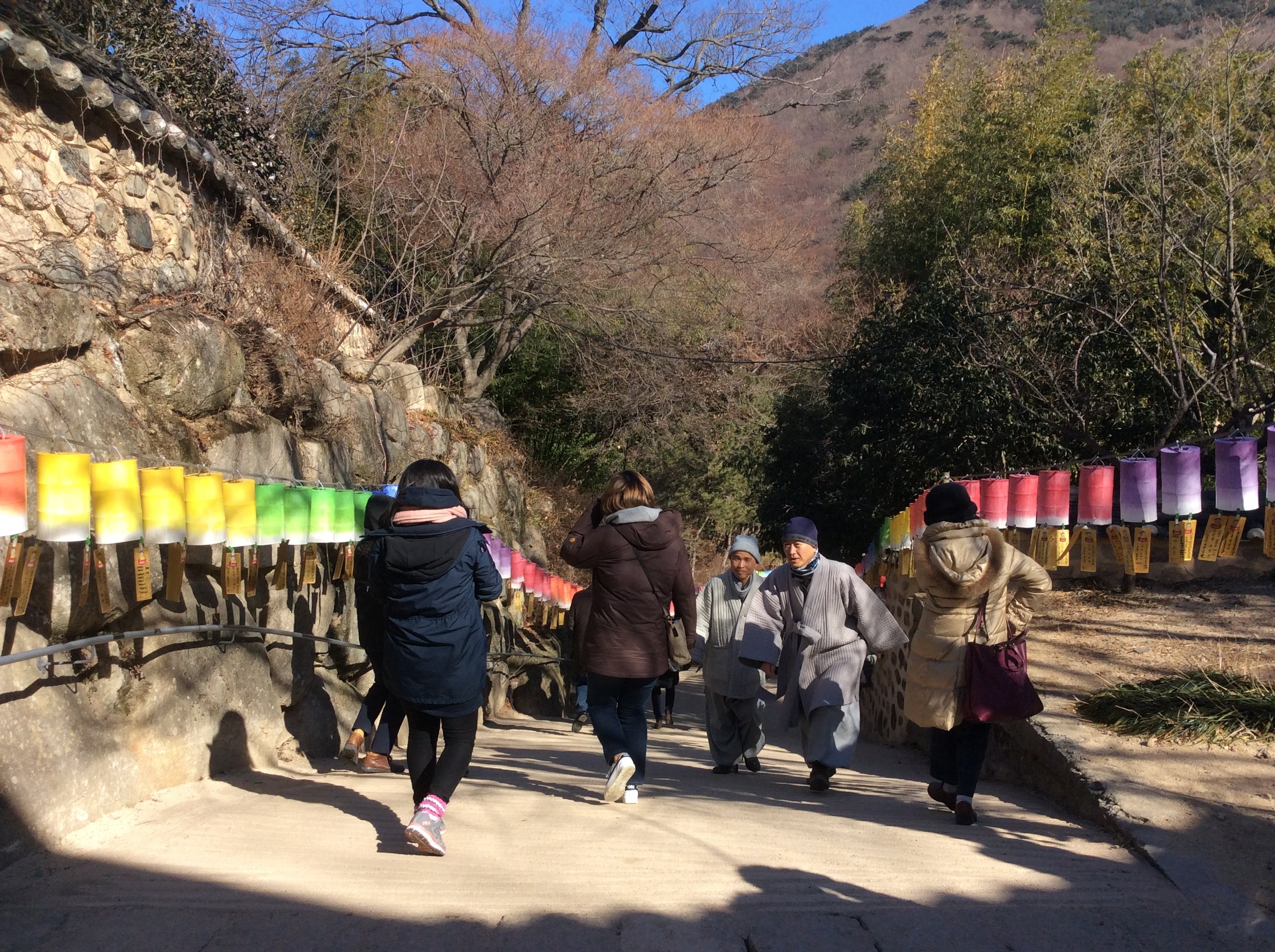

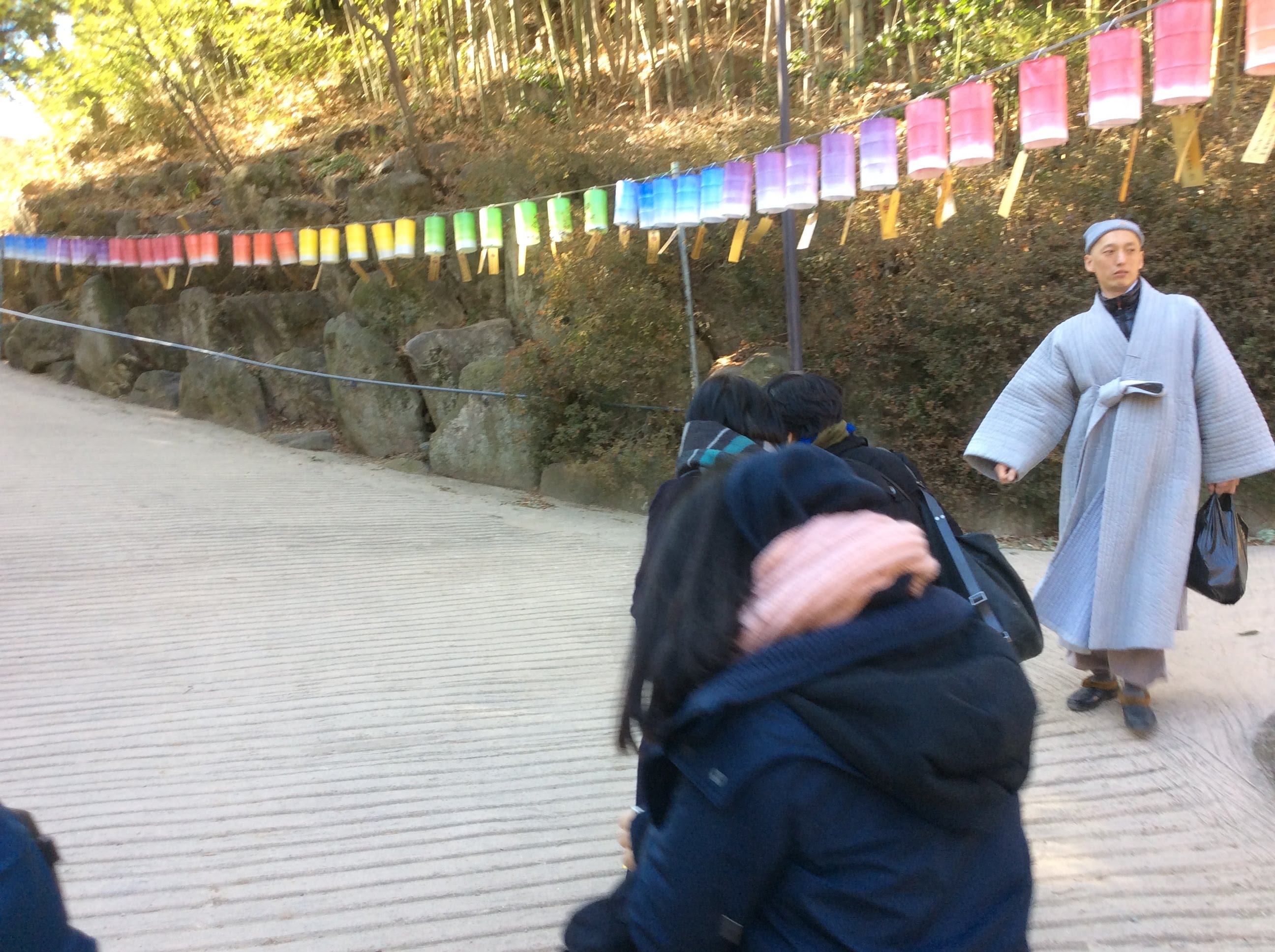

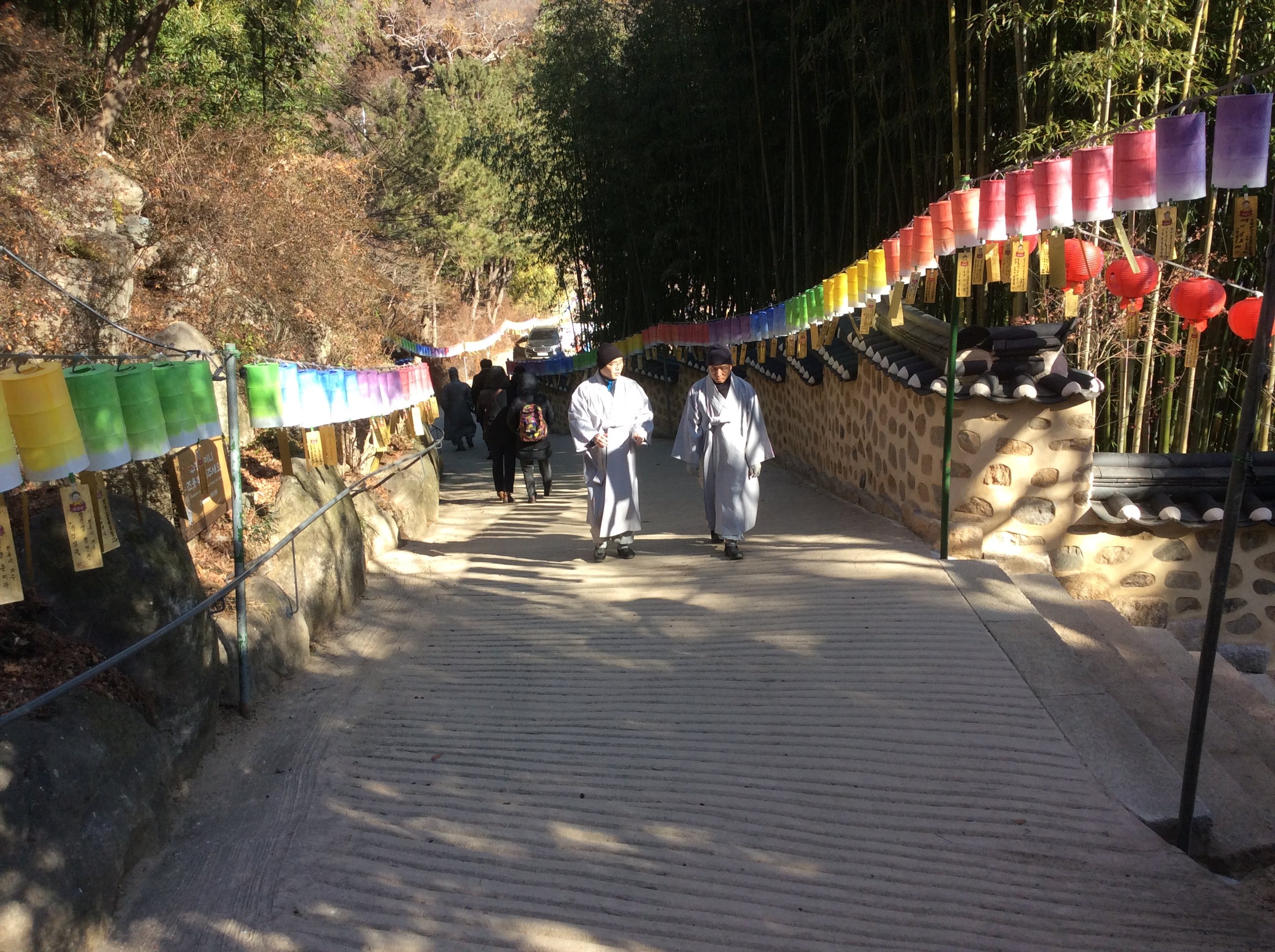
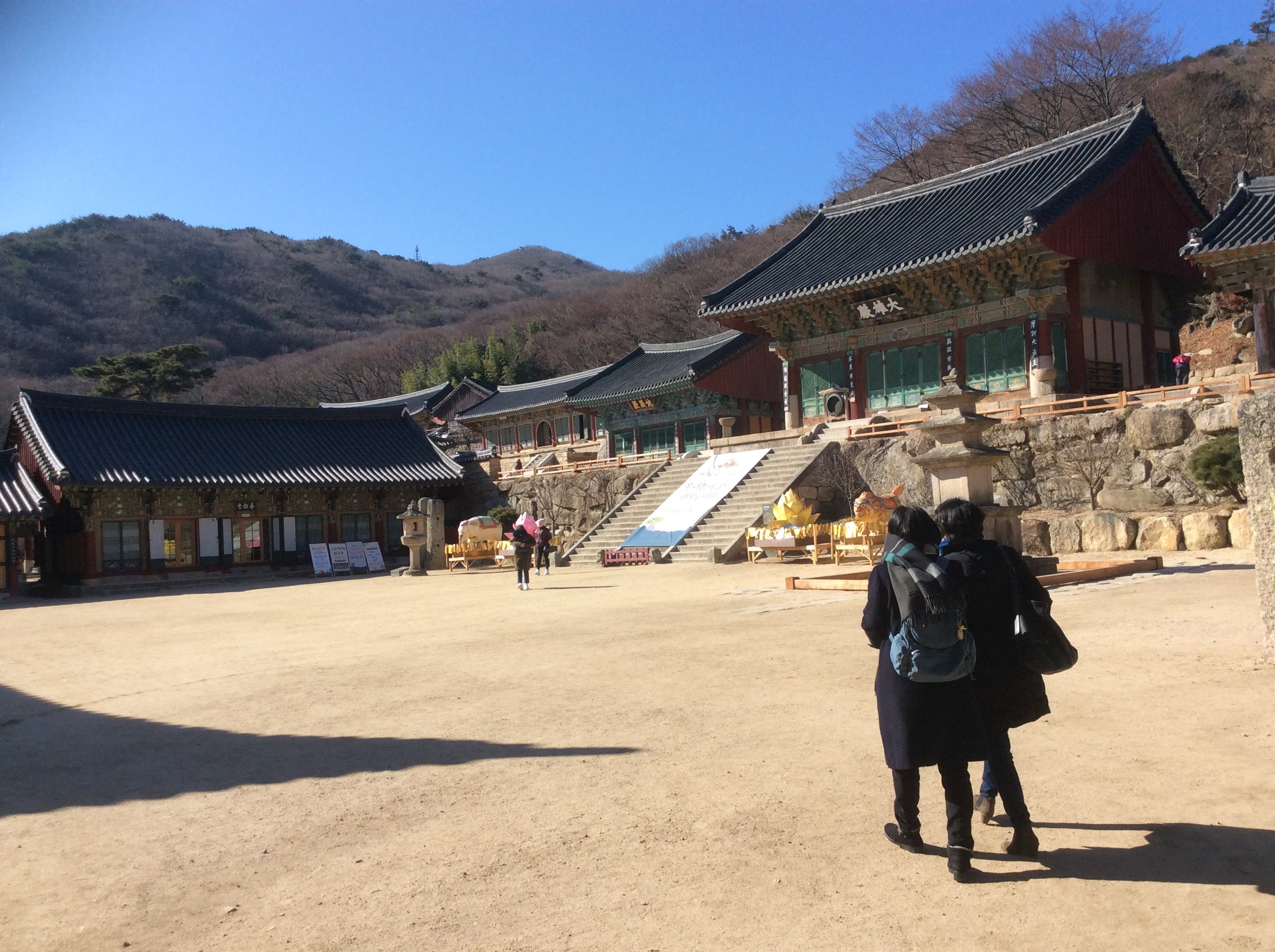
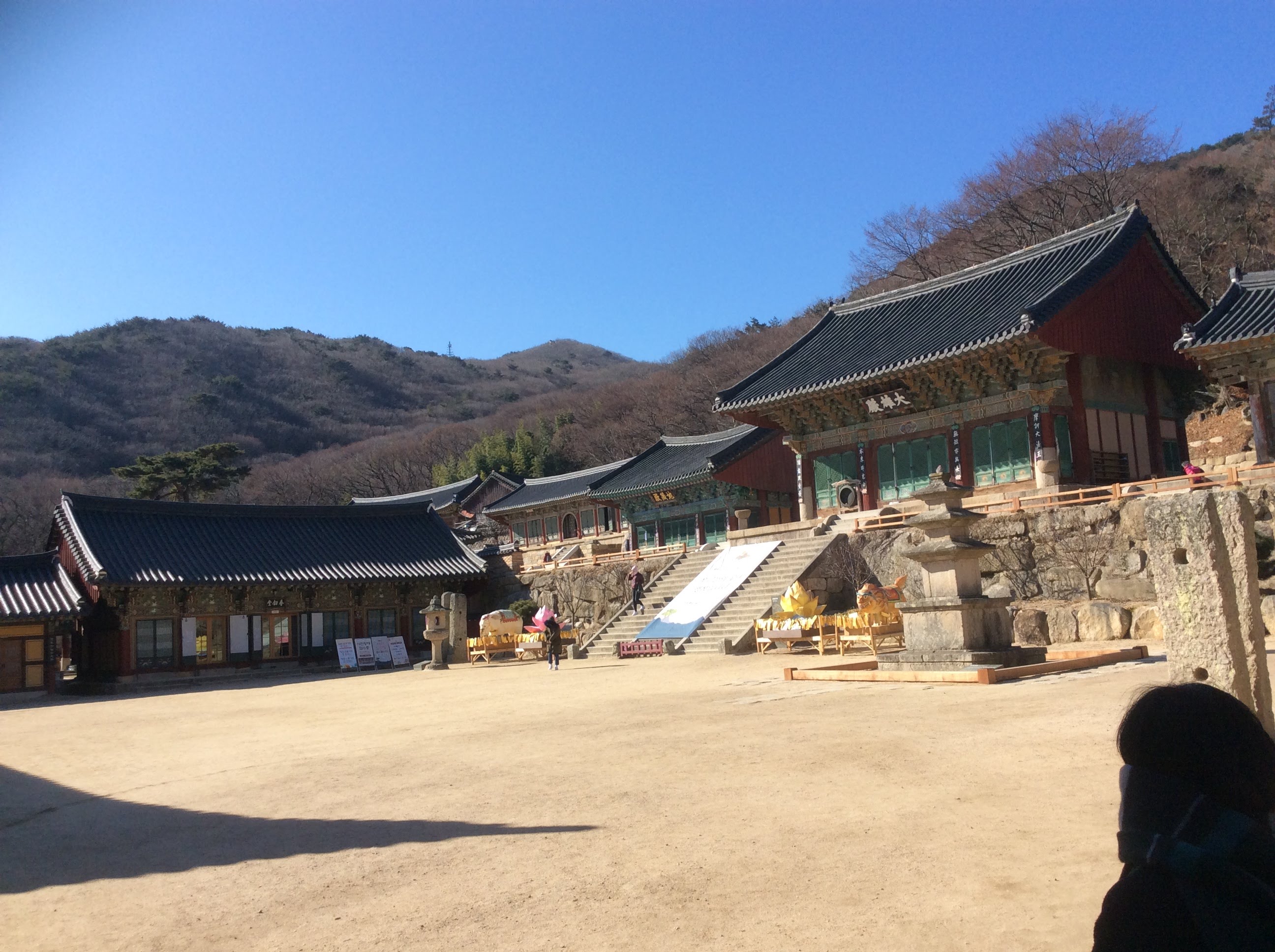
No Comments to Lunch At Beomosa so far. (RSS Feeds for comments in this post)
No one has commented so far, be the first one to comment!